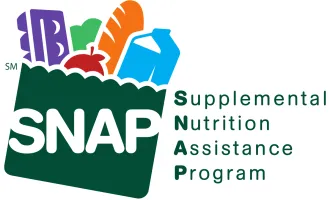
This Date in UCSF History: Student Housing on Treasure Island?
Originally published in Synapse on April 23, 1998. The 65 students who live in UCSF’s Turk St. apartments learned to their surprise Tuesday that the university hopes to phase out the building as student housing.
In a letter sent to students, the Campus Housing office announced, “Students interested in housing at Turk will be put on an application list for housing at Treasure Island... an alternative the University is currently negotiating with the City of San Francisco.”
The letter arrived four days before the students are to request campus housing slots for next year in a lottery process.
The initial reaction of Turk St. residents was negative, according to first-year medical student Shreya Parikh.
“The main concern was transportation,” she said. Tony Hsu, a dentistry student who has lived at Turk for three years expressed dismay at “such short notice.”
Pharmacy student Christian Choi said, “Next thing you know they’ll want to ship you off to Alcatraz.”
Campus planners have been considering Treasure Island as a site for student housing since October ‘97, according to Assistant Vice Chancellor of Planning Irene Agnos, who took part in an interview Tuesday along with Barbara Jones, head of Housing, and Stella Hsu, assistant vice chancellor of auxiliary services.
“The two issues of Turk Street and Treasure Island just happened to coincide,” Agnos told Synapse.
She explained that UCSF is part of a consortium of six local institutions that are jointly pursuing goals such as affordable housing for students, faculty and staff.
The consortium expressed interest in Treasure Island after Mayor Willie Brown suggested that the decommissioned Navy base could provide affordable housing to San Francisco residents.
Agnos is executive director of the consortium, which includes City College, San Francisco State, USF, Golden Gate, and the San Francisco Art Institute.
Treasure Island was built for the 1939 World’s Fair and used by the U.S. Navy from 1941-1997. It was returned to the city as part of the recent wave of base closures. Brown is supervising its development.
There are almost 1,200 housing units on the island, most built in the 1970s and ‘80s. Brown is weighing a plan to allocate some of the units to city employees — police, firemen, and teachers.
Others will go to clients of social service programs through the Treasure Island Housing Development Initiative — TIHDI, pronounced “tie-dye.”
The city has promised to give the consortium “below market rate” rents — 60% of what comparable housing in the city would cost, as determined by real estate appraisers.
In return, consortium members must commit to developing a self-sustaining community that includes TIHDI residents.
“We’re going to try create something that’s never been done in this country — provide an environment for students to live that allows them to meet students from other universities and look at new kinds of relationships,” Agnos said.
City workers, students, and TIHDI people will be integrated within the living units.
A small portion of the revenue from the rents may be used towards hiring personnel to run the programs.
Planners envision a child-care center, resident-run small businesses, training programs, computer labs, and a health clinic. An elementary school already exists on Treasure Island.
The John Stewart Company is refurbishing the units. By September, 2(K) units may be available for use by the consortium.
Agnos does not know how many of these will actually be allocated to UCSF.
“Once we see what the demand is (from the other institutions],” she explained, “we’re going to negotiate a fair distribution of the housing.”
Some 500 units may ultimately be acquired by the consortium.
“The housing al Treasure Island consists of a variety of two, three and four bedroom unites with projected rents of $1,000 to $1,500 a month,” according to the letter to students from Campus Housing’s Resident Relations Manager Matthew P. Johnson.
But Agnos says the rents are still being negotiated, and she is hoping for a lower price range. Jones would like to see an average rental price for students of $400, including utilities.
“If negotiations with the city... do not work out,” according to Johnson’s letter, “we will reassign those students referred to Treasure Island back to the Turk Boulevard Apartments.”
Student Housing More than 300 UCSF students — less than 12% of the population — live in buildings maintained by Campus Housing.
The sites are Turk St. Aldea (130 residents when finished), and houses at Third Aye. and Fifth Aye. (117 total). Turk houses primarily first-year students in the schools of medicine, pharmacy, and dentistry, in 12 units.
The average rent is $358, including utilities and cleaning service. Bedrooms are typically shared by two students.
UCSF purchased the Turk St. building in 1987 for $2.8 million, resulting in annual mortgage payments of $250,000. Jones said the revenue from students’ rents covers only about half of the debt service and operating costs.
If Treasure Island provides an acceptable alternative, Housing will consider selling the property. There are no plans to renovate the space for other uses.
The Housing office employs 17 people — five managers and 12 maintenance workers. Selling the apartment house on Turk St. will result in the loss of 3.75 full-time positions, Jones said.
She and Hsu expressed optimism that comparable positions for displaced workers would be provided by UCSF.
Another reason Campus Housing hopes to unload the building, according to Hsu, is student ambivalence about its location.
“Over the years, we haven’t gotten rave reviews about Turk because of the distance from the campus.”
This problem could be magnified at Treasure Island, students fear. The planners don’t want residents commuting by car because of the parking shortage at Parnassus Heights.
They acknowledge they will have a hard sell on their hands unless Brown authorizes more extensive MUNI service. Currently MUNI buses only run to the island on a limited basis.
Other options being discussed include water shuttles from the island to the Ferry Building, or van service to the Embarcadero.
Agnos dismissed the idea of a dedicated van running between UCSF and Treasure Island as prohibitively expensive.
The possibility of Treasure Island housing is not going to affect the May 4 lottery, said Jones.
To be considered, students must turn in their preferences by Friday April 24th.
Turk residents are concerned. Some would prefer to live in the Turk apartments over the avenue housing, but feel they have no choice if Turk becomes unavailable.
“I would rather live in Turk” one explained, “because I have a car and I would love to have the garage parking. But I don’t want to get locked into a contract and end up on Treasure Island.”



